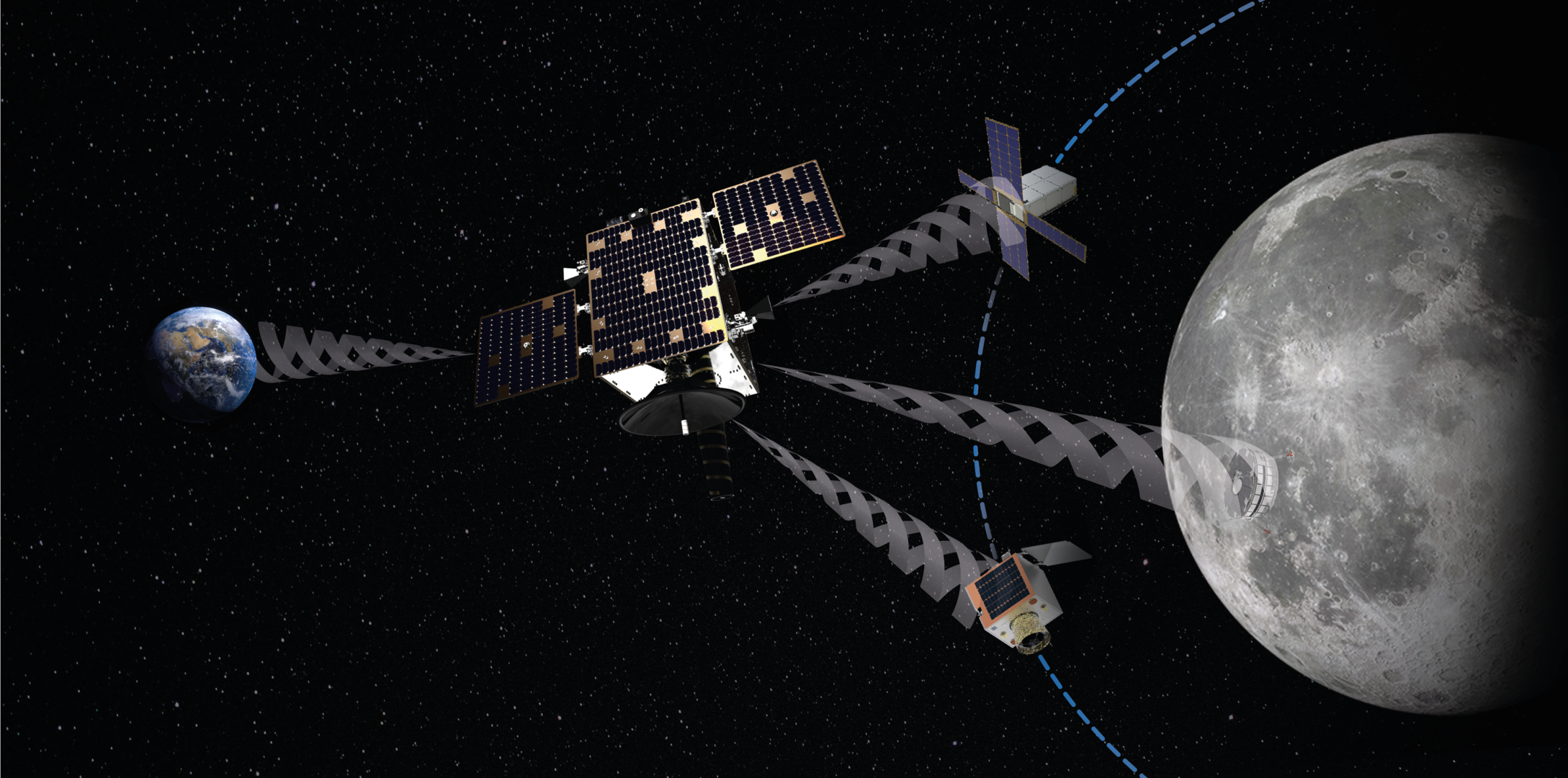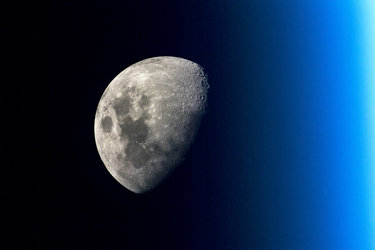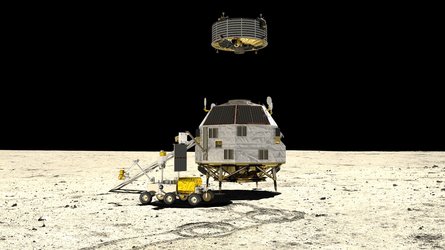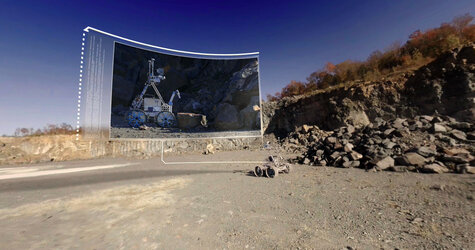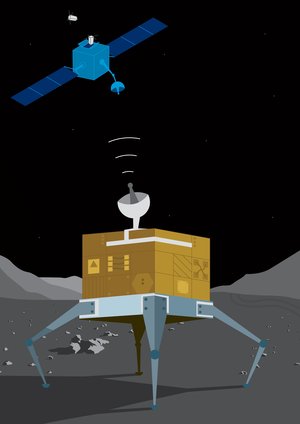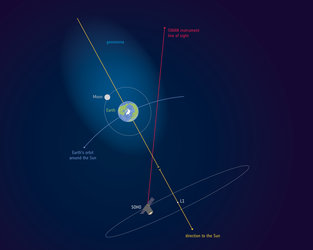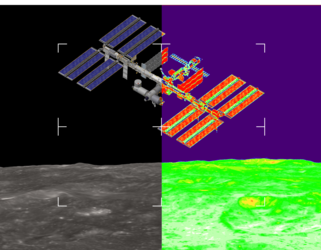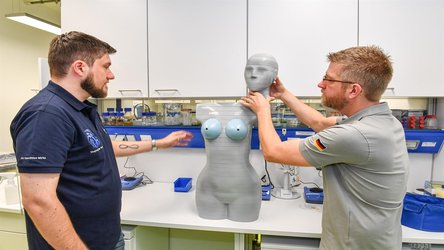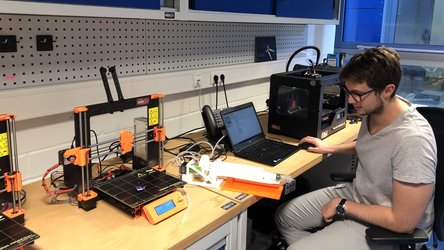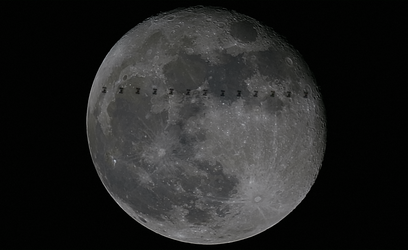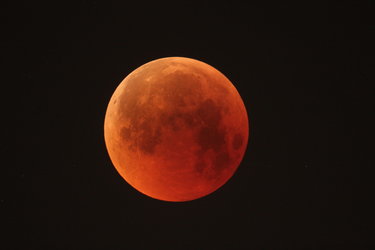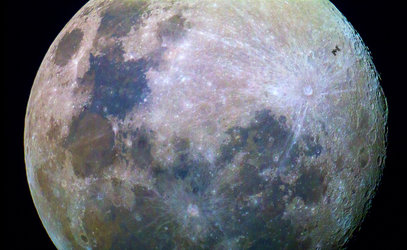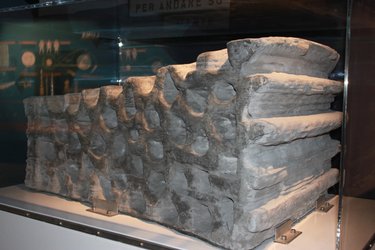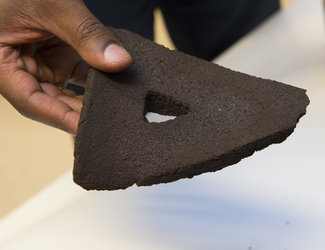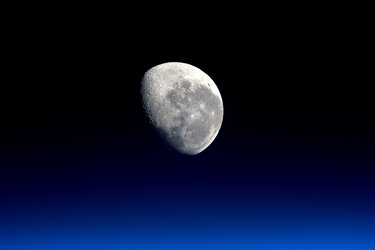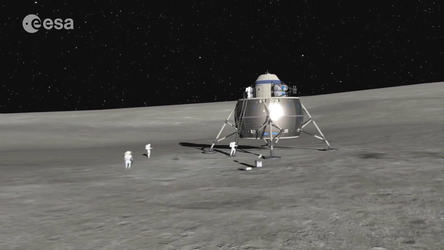ESA signs collaboration agreement for commercial Lunar missions
ESA has signed a collaboration agreement with Surrey Satellite Technology Ltd (SSTL) and Goonhilly Earth Station (GES) for Commercial Lunar Mission Support Services at the Space Symposium in Colorado Springs, USA. This innovative commercial partnership for exploration aims to develop a European lunar telecommunications and navigation infrastructure, including the delivery of payloads and nanosats to lunar orbit.
The partnership allows for a low-risk, phased approach to implementing a sustainable, long-term commercial service and will support lunar scientific and economic development across Europe and the rest of the world. The agreement includes the upgrade of the Goonhilly Earth Station for commercial deep space services and the development of the space segment with a lunar pathfinder mission. The cooperation also encompasses the commercial and regulatory support to catalyse the lunar economy and provide affordable access to the lunar environment, and ultimately deep space.

The agreement was signed by Sir Martin Sweeting, founder and Executive Chairman of SSTL, Ian Jones, founder and Chief Executive of GES and David Parker, Director of Human and Robotic Exploration at ESA.
David Parker commented, “The agreement between ESA and SSTL/GES establishes ESA’s first partnership for providing commercial services in support of lunar missions. The Lunar Pathfinder mission would provide exciting new opportunities for science and technology demonstration and open deep space access to new actors.”
Sir Martin Sweeting commented, “I am delighted that this collaboration agreement will enable new, and regular, mission opportunities to the Moon, which I believe is the next frontier for commerce and sustainable solar system exploration and exploitation.”
Ian Jones remarked that, “This partnership opens a new chapter on the development of international exploration of the Moon and beyond. We are excited about the potential of our new partnership with SSTL and ESA to make the commercial lunar economy a reality.”
Alice Bunn, International Director at the UK Space Agency, said: “The UK is at the vanguard of a new, commercial era of space exploration, where costs are lower and innovative companies are changing the way things are done. While this agreement covers missions to the Moon, there is no reason why we couldn’t see a similar service for Mars in the future."
Following the recent announcement of the GES ground segment upgrade to form the world’s first deep space commercial node, the partners are now jointly committed to the developing the Lunar Pathfinder space segment for a low cost “Ride and Phone Home” capability. The Lunar Pathfinder mission will offer a ticket to lunar orbit for payloads and nanosats onboard an SSTL lunar mothership spacecraft, which will provide communications data relay and navigation services between customer payloads and the GES Deep Space ground station.
The £1m per kilogram ticket for a flight opportunity in the 2022 timeframe includes end-to-end mission service which supports the integration, transportation and deployment of payloads, the provision of data relay and navigation services via the dedicated ESA ESTRACK deep space network, and a simple web-based interface for payload operations and return of mission data.
Private and agency Lunar landers, rovers and surface impactors will also be able to sign up to use the lunar communications and navigation services provided by the mothership either for primary mission operations, to provide additional capacity, or as a back-up service. For prospecting, exploring, and ultimately utilising the far side of the Moon, this communications relay service will be a mission enabler, providing the vital bridge between Earth and the lunar surface. Exploring the far side of the Moon, particularly the South Pole Aitkin Basin, is a key area for future robotic and human exploration due to its chemical and mineral composition. The stable elliptical orbit of the mothership will allow for long duration visibility of the Southern Lunar Hemisphere each day, with maximum opportunities for the transmission and reception of data between Earth and the lunar surface.
Prospective customers for Lunar Ride and Phone Home opportunities are invited to contact lunar@sstl.co.uk
Press Contact:
SSTL:
Joelle Sykes, PR Manager
Tel: +44 (0)1483 804243
Mob: 07775 000853
Email: j.sykes@sstl.co.uk
Goonhilly:
Cynthia Ritchie
Tel: +44 (0) 3514 2525
Email: cynthia@whitetigercommunications.net
ESA:
Markus Bauer
Tel: +31 61 594 3 954
Email: markus.bauer@esa.int


